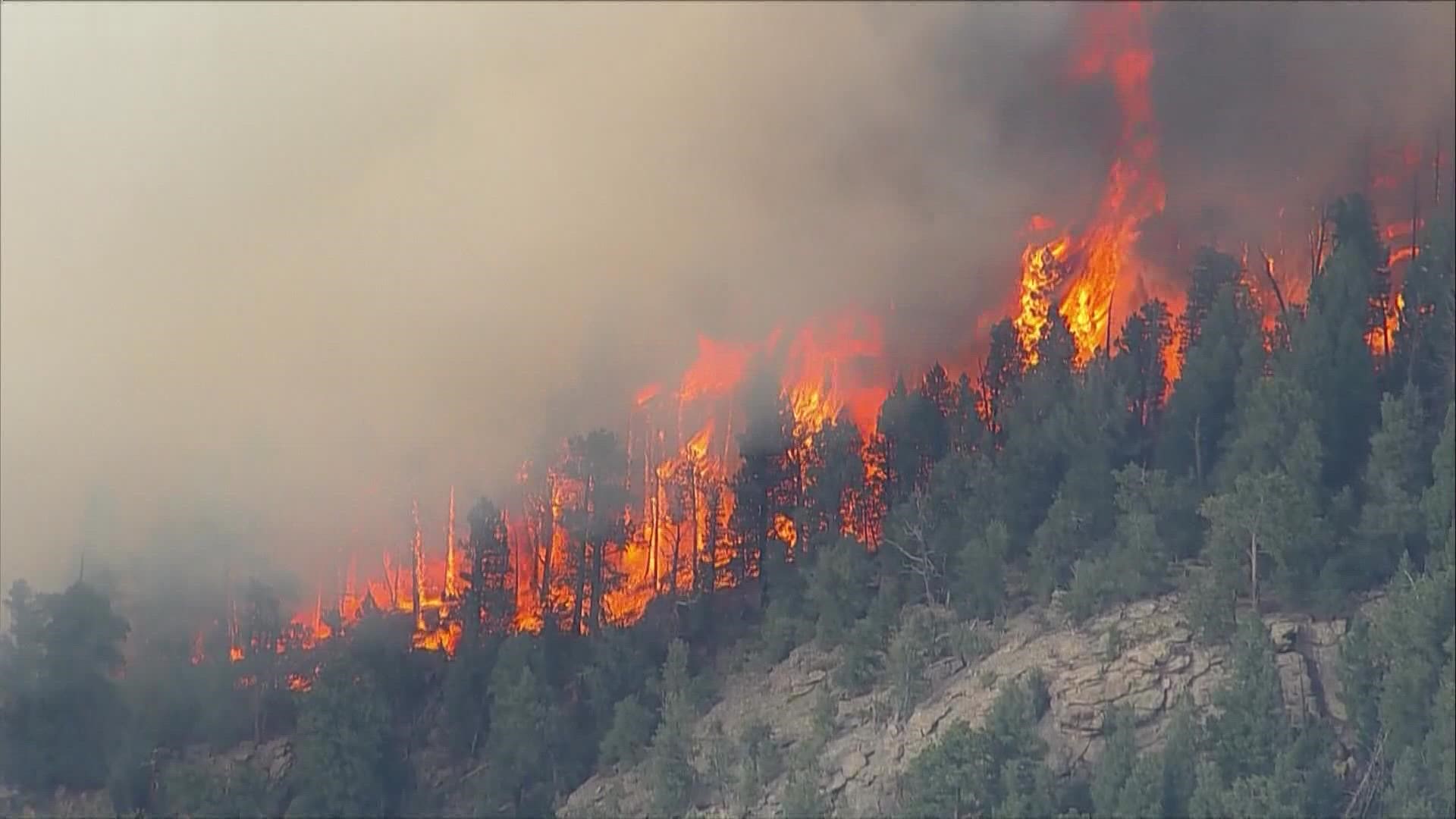COLORADO, USA — It’s a disastrous climate combination – wildfires followed by heavy rain.
New research from the National Center for Atmospheric Research in Boulder shows both will become more frequent because of climate change.
Climate scientist Danielle Touma said the rise in wildfire frequency shown in the study, was partially due to a longer season, but she also found that there will be a dramatic increase in the number of Red Flag days within the fire season.
Those are days when strong winds combine with low humidity, like we’ve seen across the state almost every day through the first 15 days of April.
The study showed those events in Colorado doubling or tripling by the end of the century, with a 50% increase by 2050.
The study also showed that extreme rainfall events, which currently happen about once a year on average, will increase to three times a year by 2100.
Touma said there will also be more fall and winter rain events in the future, which means the longer fire seasons will be on a collision course with the rainy seasons.
Instead of the burn scar floods coming one year later, they might come 3 to 6 months after the fire, or sooner.
Overall, more than 90% of extreme fire events in the three regions that the research team focused on — which included Colorado along with California and the Pacific Northwest — will be followed by at least three extreme rainfalls within five years
“That’s another reason why these types of events could be even riskier in the future because of the short time span kind of depleting people’s energies, depleting emergency resources, "said Touma. "We will have to start preparing for these post-wildfire debris flows much sooner than we typically have in the past."
Here is some more insight about this research and the lead author Danielle Touma from her interview with 9NEWS.
(Editor's note: Answers have been edited for context and clarity.)
Were you surprised by the result of the study?
Scientists have known for a while that a warming climate will lead to increased wildfire activity but it is still startling to see the frequencies in your own study. The most surprising thing to me was how widespread the heavy rainfall events were shown to be. Covering just about the entire western U.S.
How did you become interested in researching this topic?
I was doing my post-doc at UC Santa Barbara the year after the deadly Montecito mudslides. It was only about a month after the Thomas fire, and there were a lot of questions about that type of scenario becoming more frequent.
Why are mudslides common after wildfires?
The vegetation is lost to the fire, and the heat from the fire makes the soil water repellent. So little to no rainwater gets absorbed and it all runs off the slope while collecting all the burned debris left behind by the fire.
How long are burn scars vulnerable to mudslides?
It really takes about 8 years where you would expect enough regrowth where things will go back to normal. Debris flows and mudslides usually happen within the first 2 years, and flash floods can happen more than 5 years after the fire.
Is there anything we can do to limit the flood risk after a fire?
Land managers can take action to at least minimize the damages. One example would be how CDOT set up barriers around some facilities shortly after the Grizzly Creek fire. The mudslides that followed could have definitely been much worse if they hadn't done that.
What role did climate change have in your study?
We used multiple computer simulations of the climate going forward from now to 2100. All used the assumption that greenhouse gas emissions would continue to warm the atmosphere at the current rate. That's the one uncertainty about a study like this, because we don't really know humans will behave over the next 70 years. It could be a little better or a little worse depending on how we handle our emissions.
Colorado doesn't have many examples of major debris flows less than 6 months after a wildfire, is our state as vulnerable to that compared to other areas?
We saw more of that short time span flooding in California and the Pacific Northwest. At least for now, Colorado has snowfall as an advantage, but as we move further into the future, Colorado may see more rain in months like November, December, and March; that could turn those odds in our state.
How might the longer fire season change that?
Take the NCAR fire for an example, which was right outside of our building. That happened in March. It's not a huge burn area but it's on a very steep slope with a neighborhood right below it. It seems very likely that we will get some heavy rain there within the next 6 months. Wildfires in the early spring pose earlier than normal flood risks.
SUGGESTED VIDEOS: Science & Weather

